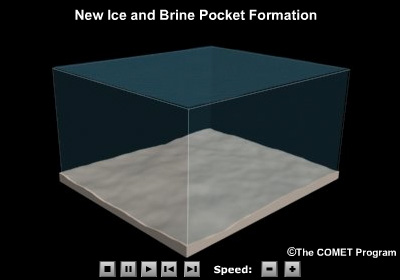Table of Contents
Sea Ice and Icebergs
Sea Ice and IcebergsIce in the Arctic
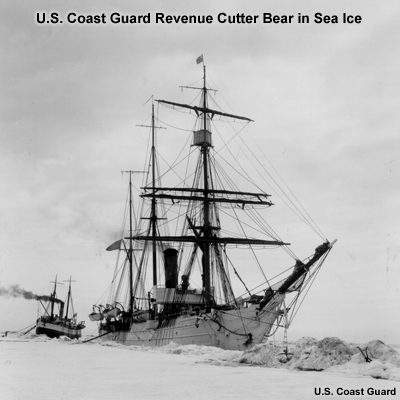
Ice presents a constant danger for ships operating in the Arctic. Ships can sustain damage from collisions or become trapped and unable to move (beset). There are 2 kinds of ice floating in the Arctic: sea ice and icebergs. They differ in the way they form and the danger they present.
Sea Ice and IcebergsSea Ice Climatology
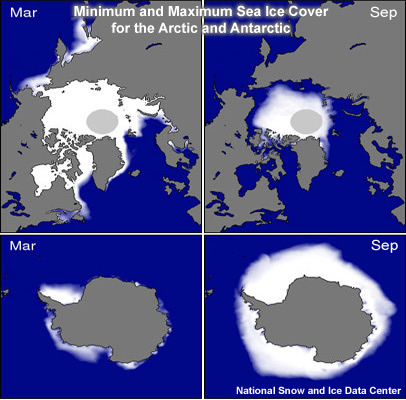
Sea ice forms when seawater freezes. As one might expect, Arctic sea ice forms in winter, reaching a maximum in March, and melts in summer, reaching a minimum in September.
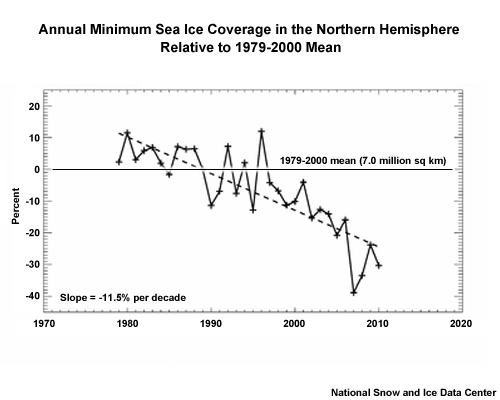
In recent years, the thickness and extent of sea ice has been decreasing. This has opened up sea routes across the Arctic. Long-term climate models indicate entirely ice-free summers by the end of this century.
Sea Ice and IcebergsSea Ice Classification
Sea ice is classified by its thickness and age. It ranges from a soupy mix of crystals to multiyear ice up to 3 meters thick.
When sea ice forms, ice crystals expel salt, which accumulates in pockets of salty brine. These pockets weaken the newly formed ice. Over time the brine escapes and is replaced with summer meltwater, which freezes the following winter. The resulting multiyear ice is much stronger and presents a formidable barrier to icebreakers.
Sea Ice and IcebergsSea Ice Movement
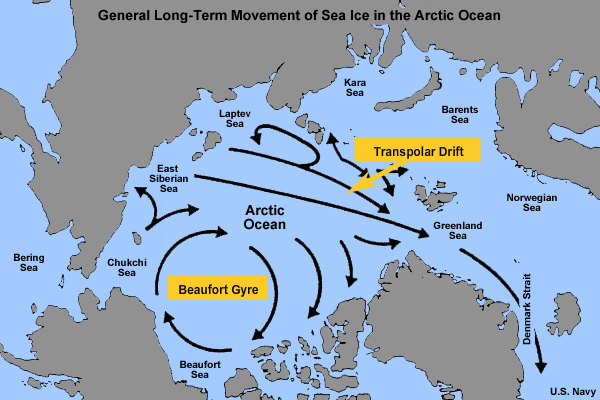
With the exception of fast ice, which is fastened to the shore or seafloor, sea ice is in constant motion. Over short time periods, wind is the primary driver. Over longer periods of time, ice tends to follow the major currents, including the Beaufort Gyre and Transpolar Drift.
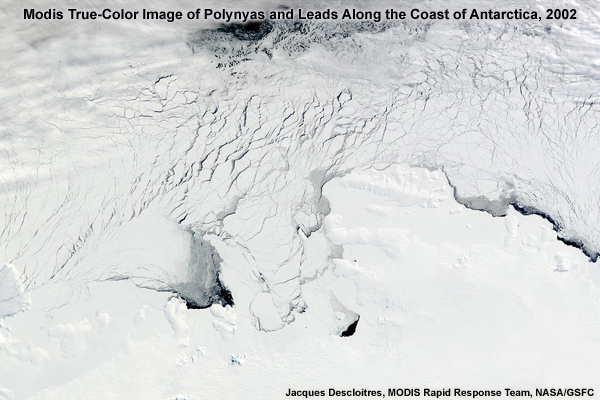
One consequence of this motion is that open water can be found year-round. Areas of open water are called fractures, leads, or polynyas depending on their size and shape. They are important both operationally as well as ecologically.
Sea Ice and IcebergsOperational Sea Ice Products
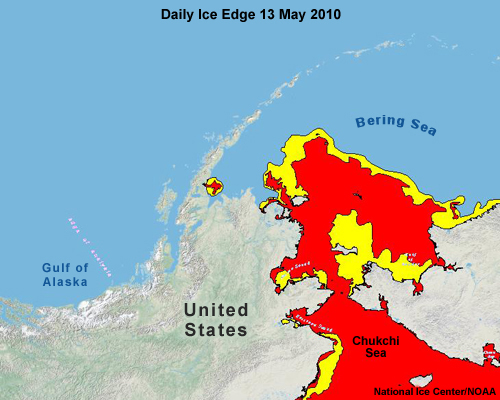
Analyses and forecasts for sea ice are available online from the National Ice Center and the National Weather Service. These products include a daily ice edge, weekly ice analyses, 30-day outlooks, and more.
Sea Ice and IcebergsIcebergs
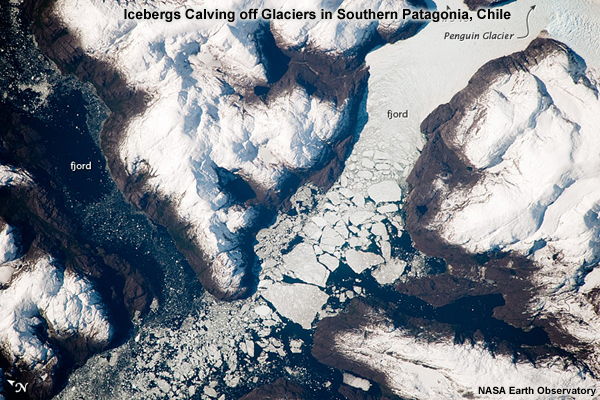
Icebergs form when ice calves off glaciers into the sea. As a result the ice is very fresh (not salty) and thus very strong. Also, because the ice accumulates on land, icebergs can be much thicker than sea ice.
Sea Ice and IcebergsIceberg Classification
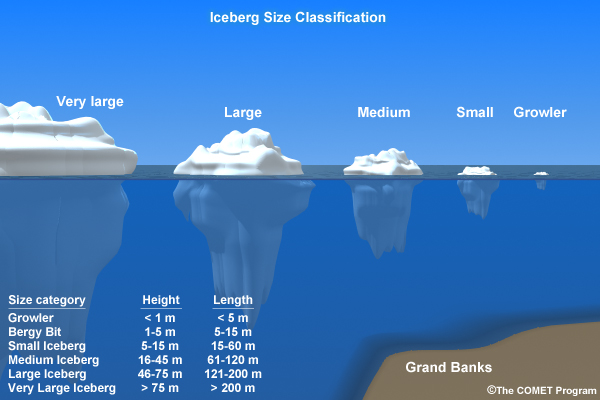
Icebergs are classified by size and shape. Sizes can range from small bergy bits to large bergs with lengths of tens of kilometers. While Arctic icebergs do not reach the size of their AntArctic cousins, they can still present a formidable hazard.
Sea Ice and IcebergsIceberg Drift
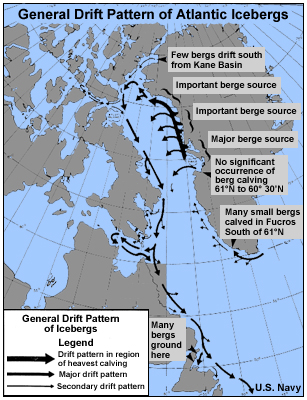
Most Arctic icebergs form around Greenland. They are carried by currents that follow the coast of Greenland and Baffin Bay, then south past Labrador and Newfoundland and into North Atlantic shipping lanes.
Sea Ice and IcebergsOperational Iceberg Products
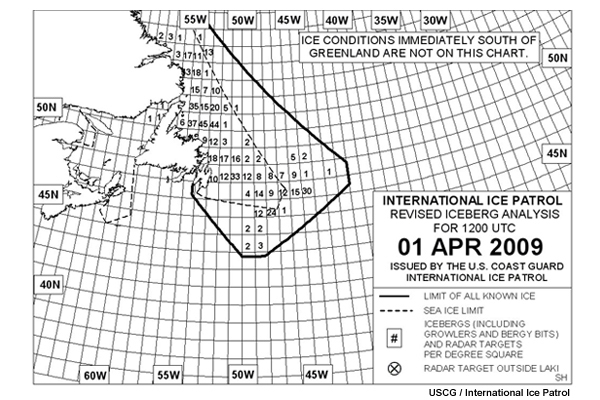
Because icebergs present such a danger, they are closely monitored by the International Ice Patrol, which produces a daily chart showing their occurrence.
Sea Ice and IcebergsQuestions
Question 1
[True/False] In recent years, the thickness and extent of sea ice has been decreasing.
The correct answer is True.
Over the past 30 years, the summer minimum sea ice has decreased by over 10% per decade. Long-term climate models indicate entirely ice-free summers by the end of this century.
Question 2
Use the selection boxes to choose the answers that best complete the statements.
The correct answer is that over short periods, sea ice drift is controlled by wind, while over longer periods it is controlled by currents.
Question 3
Use the selection boxes to choose the answers that best complete the statements.
The correct answer is that compared to sea ice, icebergs tend to be stronger and thicker. Icebergs are formed when ice calves off glaciers formed on land. The ice is very fresh (thus strong) and can be quite thick.
Question 4
Where do most Arctic icebergs form? (Choose the best answer.)
The correct answer is c) "Greenland."
Icebergs from Greenland follow currents around Baffin bay, then south to the Grand Banks and North Atlantic shipping lanes.
